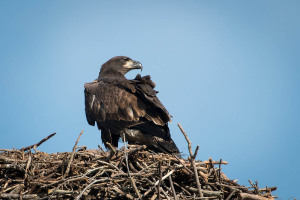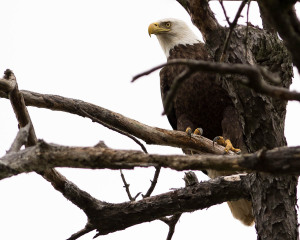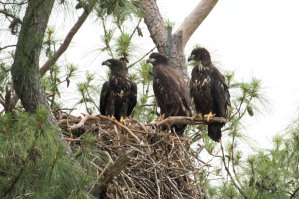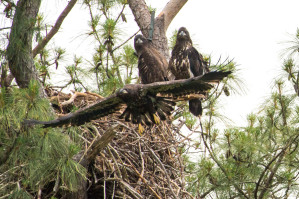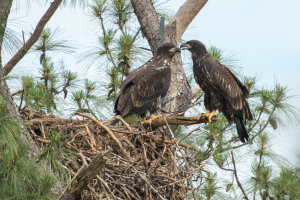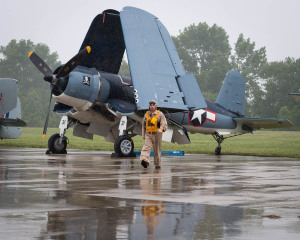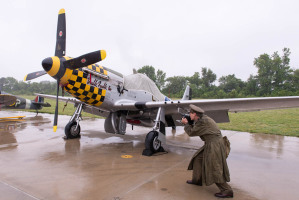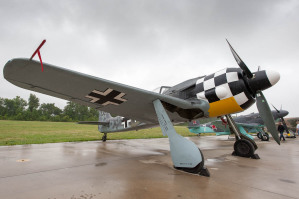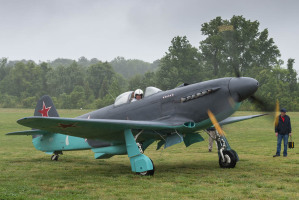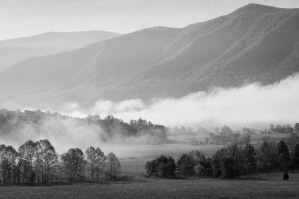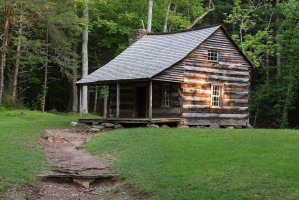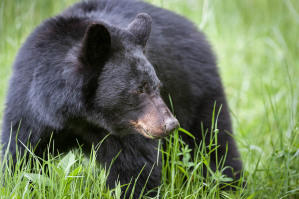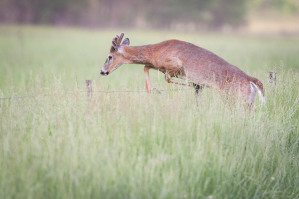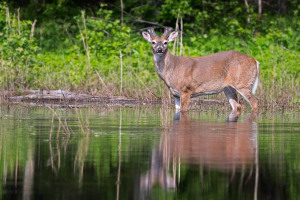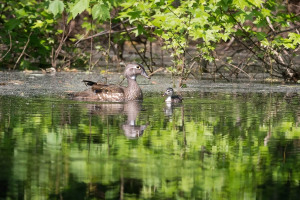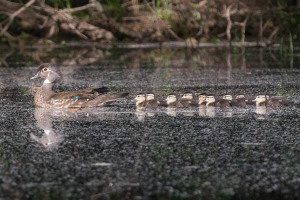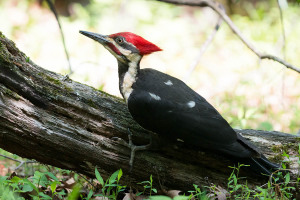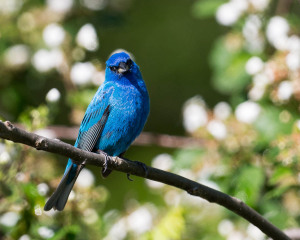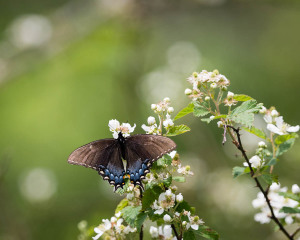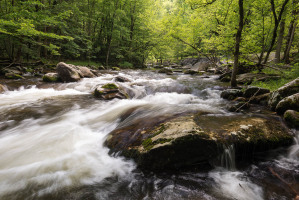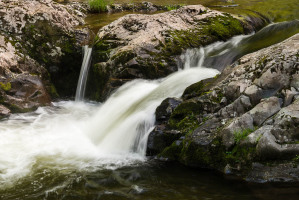It’s late May and the time of year when young bald eagles are fledging all along the James River in Virginia. Eagle eggs hatch after 35 days but, it takes another 10 to 12 weeks before they take their first flight or “fledge”.
This juvenile eagle has already fledged but, continues to return to the nest. He’s nearly as large as an adult but, he’s got a lot to learn. Eagles are not born knowing how and what to hunt. They have to be taught by their parents. It will take another 4 to 5 years before he molts, changes color and becomes an adult. Bald eagles can live for over 40 years.
This adult bald eagle landed in the top of a dead tree about 15 feet from me. I was walking around on Jamestown Island, VA near Black Point looking for woodpeckers at the time. Unfortunately, I was unable to get a clean image because I was shooting nearly straight up and there were numerous limbs in the way. Notice the sharp talons and beak. These tools along with eyes about 4 times better than ours mean that eagles are well equipped to reside at the top of the food chain.
Near the Jamestown Visitor’s Center I met Park Ranger Kirk Kehrberg. He had 3 spotting scopes set up in the parking lot that were trained on a distant nest across the road. Kirk was offering passing visitors a view of the juvenile eagles and explaining that they would be fledging soon. Naturally, I ran back to the car and grabbed my camera and tripod.
These guys were a LONG way away but, you really don’t want to get too close and possibly stress them. As a result, I was shooting my Nikon D800 in DX mode and had a 2X teleconverter on my 500mm f/4 lens. Basically, a 1500mm equivalent setup. At least I was able to shoot in Live View and use a cable release to improve focus. They weren’t moving around too much. Regardless, I still had to massively crop these images.
Suddenly, the eagle on the left started acting like he might try to fly. With his siblings intently watching he jumped from the nest and took his first flight! He didn’t go very far. Just over to a nearby dead tree to the left of the nest. It was almost like they were looking at this tree in the first photo above and daring each other to try to fly there.
After the historic first flight, the remaining eagles seem to huddle to discuss the event. Kirk told me that the eagle on the right is saying “Show off!”. Who am I to say what they said?
I would like to personally thank Ranger Kehrberg and also Traci in the gift shop there at the Jamestown Visitor’s Center for being such gracious hosts. Both of these individuals spent significant time with me discussing the eagles on the island. Typically, adult eagles will return to the same nest year after year to lay eggs and raise their young. Kirk and Traci now have a strong familiarity with “their” eagles. After witnessing this first flight, I feel that they are “my” eagles, too.

